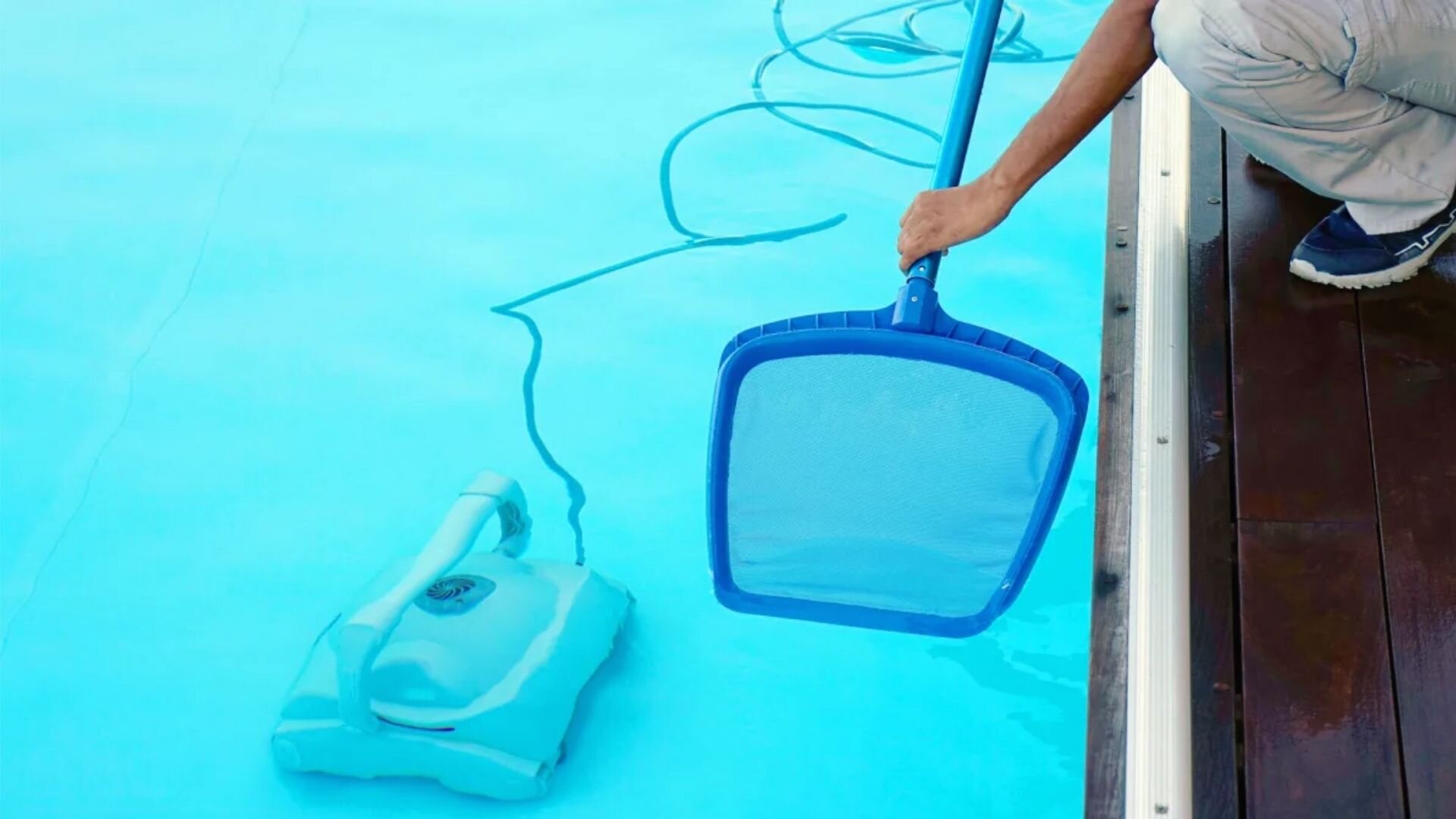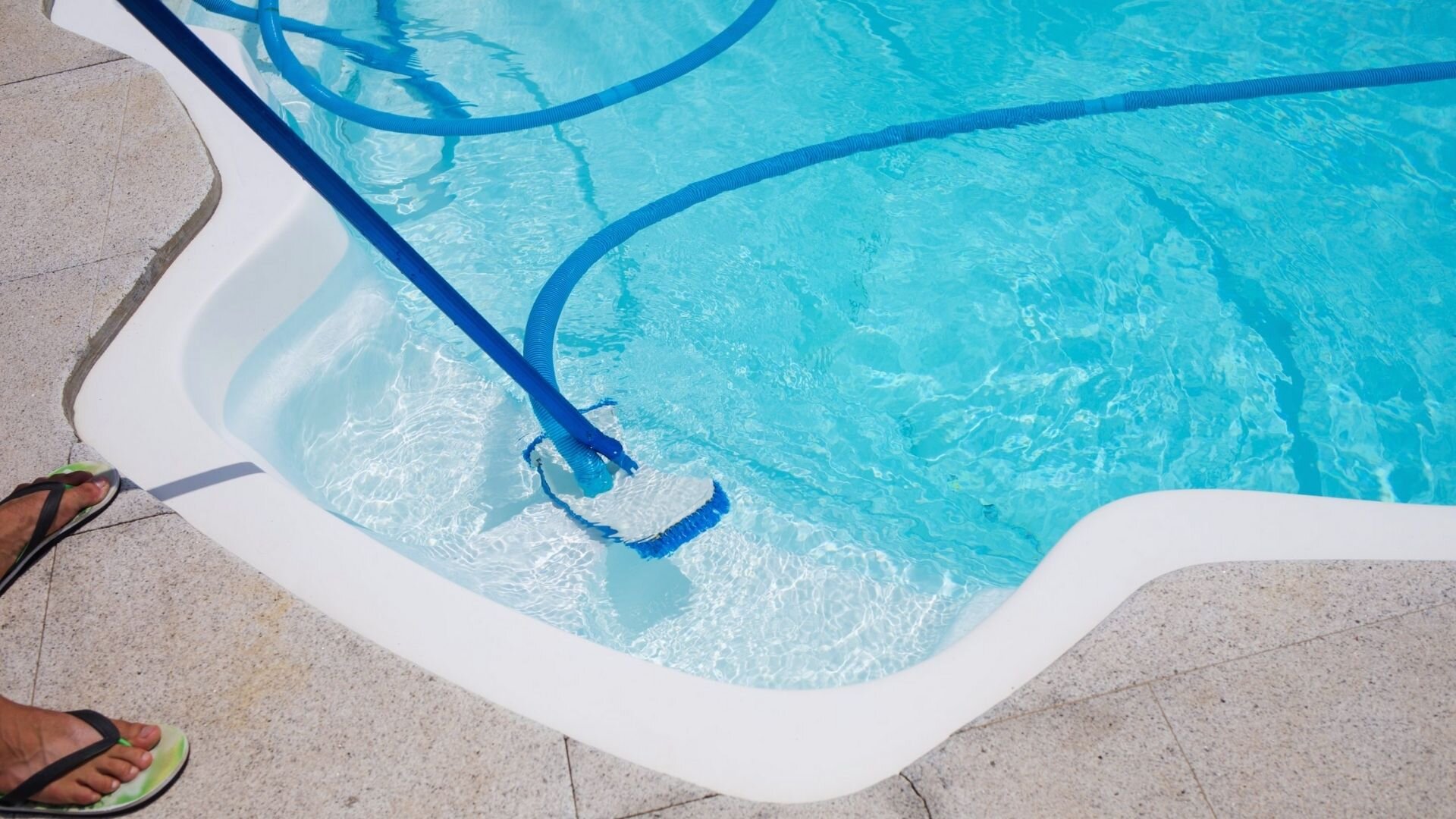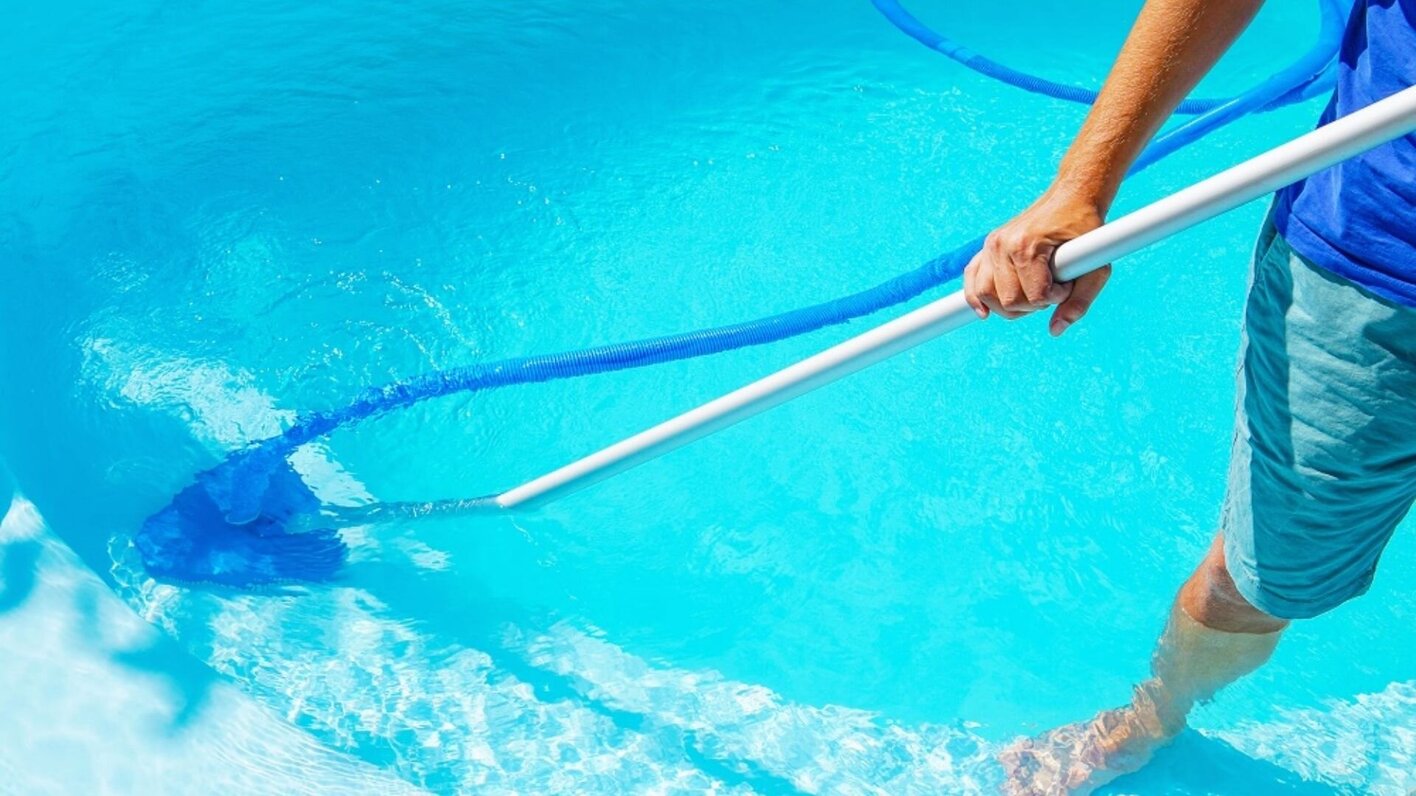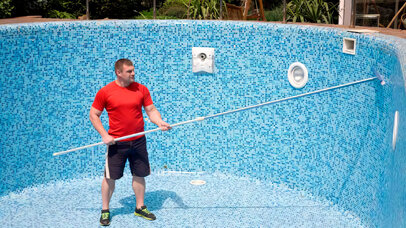A backyard swimming pool can provide endless hours of fun and exercise, particularly during the summer.
Unfortunately, swimming pools are often high-maintenance, as they quickly get murky and dirty. And nothing drains the fun out of swimming on a hot summer day like a pool full of muck.
This is where a swimming pool vacuum can help. You can keep the pool sparkling blue, clear, and hygienic using a manual vacuum cleaner and additional tools.
So, to help you get through the cleaning process smoothly, we’ve created this informative guide. By following the steps in this guide, your swimming pool will maintain its pristine look for a long time.
What You’ll Need
- Pool Vacuum
- Telescopic pole
- Flexible pool hose
- Pool vacuum head
- Pool skimmer net
6 Steps To Vacuum Your Pool Effectively
1. Clear The Floating Leaves And Debris

Before you begin vacuuming the pool, you will need to clear out any floating leaves or debris in the pool. This will prevent you from having to run the vacuum across its surface, which is both difficult and impractical.
If you don’t have a skimmer net, you can use a pole rake to remove the larger leaves and debris.
2. Adjust The Pool Filter Valve

Turn your pool pump on once all the leaves and floating debris have been cleared out. Ensure there are no obstructions in the pool filter, and clear it out as necessary.
After this, switch the pool filter valve to “filter” if there is very little or no visible muck in the pool. But if the pool is filthy with large debris, switch the valve to “waste”.
Remember that setting the valve to “waste” will reduce the pool’s water level. So, keeping a garden hose ready may be a good idea if you need to keep the water level high. That way, the debris will move through the drain without causing any issues.
3. Start Up The Vacuum
Assemble the vacuum parts and start the device. Ensure that the pool vacuum head attached to the telescopic extension pole can easily reach the deepest part of the pool.
Next, you can lower the pool vacuum head into the pool with the telescopic extension pole and vacuum hose attached to it. Now that both the pool filter and the pump are running, position the other side of the vacuum hose against the flow of a return jet.
This pushes water into the pool vacuum hose and gets rid of the air inside it. Bubbles will erupt from the head, which is a sign that the method is working.
Once the bubbles have stopped, you can move the hose away from the return jet without pulling it out of the water. Note that the hose should remain fully submerged in the pool water.
4. Attach the Skimmer Disc To The Hose
Now, attach the loose side of the hose to the skimmer disc, after which you can place the plate into the pool wall skimmer. You can find the skimmer directly above the suction vent.
5. Run The Vacuum Through The Pool

Now, you can begin moving the pool vacuum head across the pool floor in a slow fashion. Remember to begin at the shallow side of the pool and make your way towards its deeper parts. Ensure you don’t miss a spot by following a grid-like working pattern and overlapping the previous run-through along the edges.
Remember that operating the vacuum slowly is critical to keeping your job accessible. If you move the pool vacuum head too vigorously, the debris present in the pool will turn the water cloudy. It’s easy to lose track of the area covered by the pool vacuum head, so you should stop vacuuming until the dust settles again.
The water may take a few hours to turn somewhat clearer again, after which you can resume vacuuming.
6. Stop The Pool Vacuum
After you’ve cleaned the pool, disassemble the vacuuming gear just as you had assembled it. Next, return the filter valve and the pump to their normal settings. Finally, drain the water trapped in the pool vacuum head and the hose into the pool. Now, the vacuum is ready to be stored.
Additional Tips To Keep Your Pool Clean

1. Pool Shock
“Shocking” a pool is vital to keeping the water clear and clean. It involves treating the water with solid chemicals to eliminate any contaminants present. Ideally, you should shock-treat your pool at least once a week.
Chlorine-based shock chemicals kill bacteria, while other kinds can oxidise the water to remove algae and other contaminants.
2. Pool Cleaning Frequency
If your pool is frequently used, you should clean it at least once a week. Otherwise, after a few weeks of use, you may see a pile of debris at the bottom of your pool.
3. Restore The Vacuum Suction
If the vacuum loses suction during operation, disconnect the skimmer plate and the hose and hold the latter against the return jet. This will fill the hose with water again and remove any air bubbles.
Mastering The Art Of Pool Vacuuming: Achieving A Crystal Clear Pool
Pool cleaning is vital to any swimming pool’s aesthetic and hygienic qualities. It should be performed regularly to keep the pool ready for enjoyment, particularly during the summer.
By thoroughly cleaning the pool, you can preserve its sparkling quality. You can reach this point quickly even if you have never done it. It is not a complex process, after all.
But if you ever find yourself in a pickle while cleaning the pool, call The Pool Co. without hesitation. Our Sydney pool builders offer complete pool building and maintenance solutions at reasonable rates. So, get in touch with us today!



